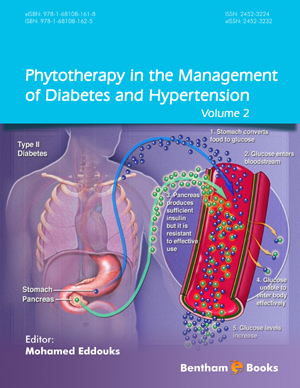Abstract
Diabetes is a disease with widespread prevalence; it adversely affects human health and contributes to the development of various chronic diseases, including hypertension, adipose tissue dysfunction, cardiovascular and liver diseases, and diabetic neuropathies and nephropathies. Diabetes is categorized as type 1 or type 2 diabetes. Type 1 is caused by autoimmune-mediated destruction of pancreatic β-cell islets, resulting in insulin deficiency, whereas type 2 diabetes is characterized by insulin resistance and/or abnormal insulin secretion. It is known that insulin resistance also leads to hypertension or high blood pressure. Both diabetes and hypertension are risk factors for cardiovascular disease and share a common pathophysiology, including insulin resistance, obesity, inflammation, and oxidative stress. The use of phytochemicals to treat diabetes and hypertension is of great interest. Curcumin is a biphenolic compound that has been used for the treatment and prevention of diabetes and hypertension in traditional Ayurvedic medicine. Dietary curcumin inhibits several cell signaling pathways known to be dysregulated in diabetes and hypertension. In addition, it can prevent diabetes and hypertension through antioxidant and anti-inflammatory mechanisms. Curcumin can normalize sugar levels through the modulation of tumor necrosis factor α, free fatty acids, nuclear factor κB (NF-κB), lipid peroxidation, and lysosomal enzymes. Furthermore, it decreases thiobarbituric acid reactive substances and succinate dehydrogenase, while activating peroxisome proliferator-activated receptor γ. Curcumin reduces insulin resistance through the activation of lipoprotein lipase, NF-E2-related factor 2, and liver enzymes participating in metabolic process. Thus, the interaction of curcumin with several signal transduction pathways reverses insulin resistance, hyperglycemia, hyperlipidemia, and other inflammatory symptoms associated with diabetes and hypertension.
Keywords: Curcumin, diabetes, hypertension.





















